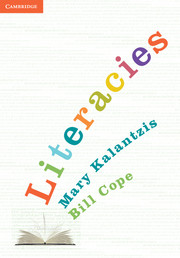Book contents
- Frontmatter
- Contents
- Acknowledgements
- Introduction The work of learning and teaching literacies
- Part A The ‘Why’ of Literacies
- Part B Approaches to Literacies
- Chapter 3 Didactic literacy pedagogy
- Chapter 4 Authentic literacy pedagogy
- Chapter 5 Functional literacy pedagogy
- Chapter 6 Critical literacies pedagogy
- Part C The ‘What’ of Literacies
- Part D The ‘How’ of Literacies
- References
- Index
Chapter 3 - Didactic literacy pedagogy
from Part B - Approaches to Literacies
- Frontmatter
- Contents
- Acknowledgements
- Introduction The work of learning and teaching literacies
- Part A The ‘Why’ of Literacies
- Part B Approaches to Literacies
- Chapter 3 Didactic literacy pedagogy
- Chapter 4 Authentic literacy pedagogy
- Chapter 5 Functional literacy pedagogy
- Chapter 6 Critical literacies pedagogy
- Part C The ‘What’ of Literacies
- Part D The ‘How’ of Literacies
- References
- Index
Summary
Overview
Didactic literacy pedagogy was the founding approach to reading and writing from the introduction of mass, compulsory, institutionalised education in the nineteenth century. It is still an approach that is widely advocated publicly and applied in schools today. A didactic approach to literacy requires learning the rules of the way in which sounds and letters correspond. It involves learning the formal rules of what is presented as the correct way to write. It is about comprehension of what authors are really supposed to mean. It is about learning to respect the high cultural texts of the literary canon. Its syllabi tell you what is to be learned. Its textbooks follow the syllabi. Teachers are expected to follow the textbooks. And students have to give the right answers when it comes to the test.
On the paradigms of literacies
In this part of the book, we look at the thinking that lies behind four major approaches to literacy, which we call ‘didactic’ (this chapter), ‘authentic’ (Chapter 4), ‘functional’ (Chapter 5) and ‘critical’ (Chapter 6). Of these, didactic literacy has been around in its current form since the beginning of modern times, a period that roughly stretches from the invention of the printing press in the fifteenth century. Later, in the nineteenth century, it became the basis for mass compulsory education. Authentic literacy, which takes a child-centred or naturalistic learning approach, has some old intellectual roots too – in the ideas of the eighteenth-century philosopher Jean-Jacques Rousseau, for instance. However, these ideas do not find themselves translated into school pedagogy in any significant way until the beginning of the twentieth century. Both functional and critical approaches are to a large extent products of the second half of the twentieth century.
- Type
- Chapter
- Information
- Literacies , pp. 63 - 94Publisher: Cambridge University PressPrint publication year: 2012



